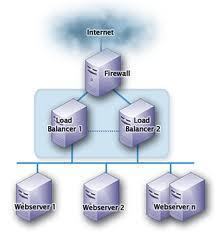What is a Load Balancer?
A load balancer is used in computing to evenly distribute tasks across two or more computers, servers, network terminals, CPUs, hard drives, and other devices in order to optimize system resources and maximize the capabilities of all devices connected to the load balancer. Load balances can be used for any purpose, but are generally used to connect multiple servers together over the same Internet connection in order to maintain browser-based services and provide a consistent connection for all users who are accessing those servers.
How Load Balancers Work
Load balancers use multiple devices to perform the same tasks. This allows tasks to be performed much quicker than when a single device is used and can minimize system overloads, maximize response time, and even backup data. Load balancers serve as an intermediary between clients and a server farm or a collection of back-end servers, and a dedicated device that forwards information to and from the load balancer generally supports them. As the load balancer receives information, it forwards the information to the back-end servers that are responsible for performing the required task. The back-end servers then send the data to the load balancer, which then forwards the data back to the dedicated device.
Applications
Big company servers most often use load balancers in order to maintain access to the servers at all times and ensure that they are capable of processing information within a reasonable amount of time. Load balancers are often used in social networking and gaming websites that have large amounts of traffic. Likewise, load balancers are used in forums, chatrooms, file transfer programs, and for server-based data storage across the Internet. Load balancers may also be used as a firewall between the general public and a network’s back-end servers by hiding the back-end servers from the website’s viewers.
Advantages
Load balancers have several important advantages. For example, load balancers create a separation between a client interface and the back-end servers of a website or network. Load balancers can be connected to servers, home computers, or virtually any other device and can back up a server or hard drive by copying files or parts of files to multiple storage devices instead of a single component. While this uses more memory, no one hard drive carries the full load of the data and this allows the data to be accessed much quicker.


Comments - No Responses to “What is a Load Balancer?”
Sorry but comments are closed at this time.